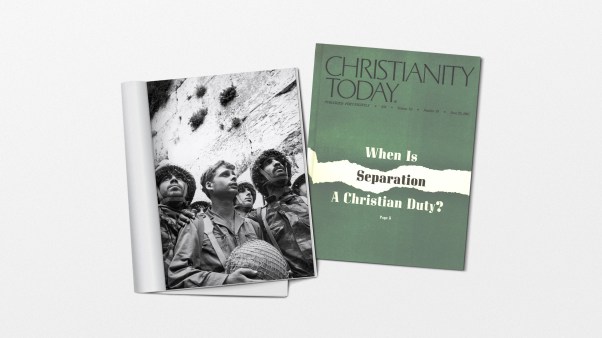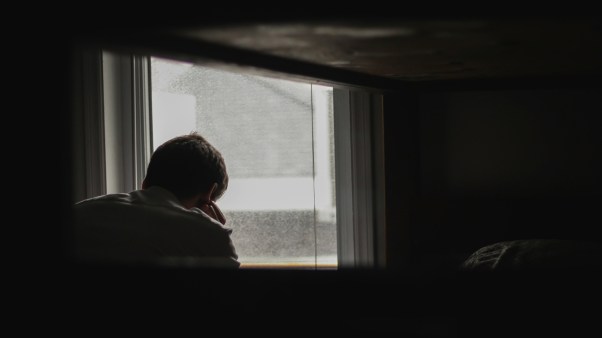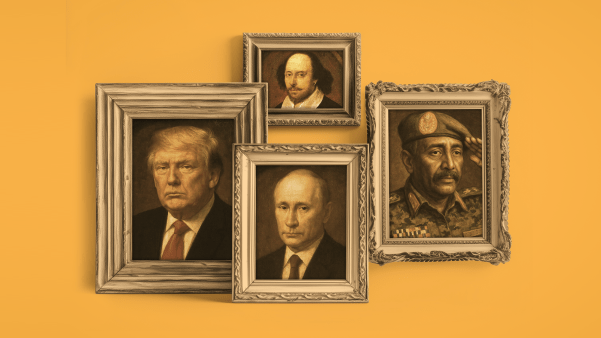The room was dark, and the lights were dim. Between the lobby and the sanctuary, I (Jamaal) was reminded by five people that there was no need for me to dress up to come to church. One member even said, “Dude, you can relax here.”
Okay, I thought. They didn’t realize I had come straight from preaching at a local Black church. I had rushed to this service because a friend had been inviting me for months to check out his church. After putting it off, I thought I might as well go and surprise my friend.
Once I found my friend and my seat, I felt weird but excited. The weirdness was because I was the only person of color there and the only one dressed up for church. The excitement came from the energy in the room. You could tell people knew they were about to experience something thoughtful and beneficial. I came with this sort of excitement too because the church had an excellent reputation not only for faithfulness to Scripture but also for its contributions to the community.
The time of worship and the sermon were spiritually uplifting. I was spiritually fed, and I could see why people spoke highly of the church. Its leaders were reaching a certain demographic of people, and they were trying to reach the rest of the community as well.
Then, after the sermon, something strange happened. People started walking to the front of the sanctuary, just like the congregants in my historically Black church did during the time of offering. But this wasn’t time to tithe, and there wasn’t any upbeat music playing. They were going to the front to take and eat, because it was time for Communion.
Those who participated in Communion tore off a piece of bread from a common loaf. They then dipped the bread in wine or juice, depending on what their consciences allowed. Finally, they ate as they returned to their seats. This was a bit disconcerting to me, because I don’t even share a cup with my own wife. Why would I eat a piece of bread torn from a loaf 500 other people have touched?
And yet, that’s what they did in this church. Years later, we still do.
That was the first service I ever attended at Sojourn Church Midtown in Louisville. Nearly a decade after that first awkward encounter, I would become a lead pastor here. At first, my germophobic tendencies kept me from appreciating how Communion happened at Sojourn, but it eventually grew on me. There is something powerful about watching everyone come forward and partake of the same bread. And now, years later, there’s something even more powerful when you see a multiethnic, multisocioeconomic, multigenerational congregation take Communion together.
This holy meal was instituted by Jesus nearly 2,000 years ago. During a Passover celebration with his disciples, Jesus transformed the Exodus meal into a banquet that signified the tearing of his flesh and the shedding of his blood for his people.
When Jesus ate the Last Supper with his disciples, those reclining next to him were people from different walks of life. They didn’t share the same socioeconomic backgrounds, careers, skill sets, or family situations.
Two decades later, however, an opposite approach to the Lord’s Supper was taking place in the province of Achaia, and that’s why Paul sends such a stern warning in his first epistle to the church in Corinth. Paul’s goal in this letter isn’t to lay out a theology of the Lord’s Supper. It’s to rebuke the church about what taking this meal in vain would do and had already done (1 Cor. 11:29–30). The main issue in Paul’s letter is that people were taking the holy sacrament in a way that separated people into social classes instead of uniting them as one.
When first-century Christians gathered to eat, bread and wine weren’t the only items on the menu. They shared an agape meal, or “love feast”—an entire meal meant to be a time of fellowship and encouragement. The Lord’s Supper happened in the context of this agape meal. The problem in Corinth was that those in higher social classes were treating the Christian love feast like a pagan banquet, during which the wealthy ate first and consumed the finest parts of the meal, leaving those who were socially and economically disadvantaged to scrape a meal together from the leftovers.
Paul regarded this as a humiliation of the community and an abuse of the Supper of the Lord, whose own example contradicts such status divisions. He tells the people they are despising the church and undermining the gospel. Christ had told his disciples, “This is my body, which is for you; do this in remembrance of me. … This cup is the new covenant in my blood; do this, whenever you drink it, in remembrance of me” (1 Cor. 11:24–25). This “remembrance” included Christ’s suffering, but also what he taught and how he lived. Jesus had spent his life serving the marginalized, the overlooked, and the diseased. And so to celebrate the Lord’s Supper in a way that reinforces classism or segregation is to reject its very meaning.
That’s why Paul informs the Corinthian church that they are sinning against the very “body and blood of the Lord” (1 Cor. 11:27). He goes on to give this command: “When you gather to eat, you should all eat together” (v. 33). What Paul intends here is for Christians to honor one another by eating together, making sure the haves and the have-nots enjoy the same meal.
Then and now, Communion is a reminder that Christ has broken down the barriers between us in his body and through his blood. I often wonder what Paul would say if he toured our city and stopped in a few churches on Sunday. Would his heart be broken by the ways one congregation seems to consist entirely of one ethnicity and social class while another is limited to a different class or ethnicity? Do our Communion tables bring together the tax collector and the zealot, the hip-hop-culture kid and the Latino immigrant, the bank president and the hotel worker?
“In this loaf of bread,” Augustine said to a group of new Christians before they participated in the Lord’s Supper, “you are given clearly to understand how much you should love unity.” Surely this unity should reach beyond people who look like ourselves.
Yes, there are separations in many of our contexts that stand outside our control. But what are we doing to bring together different social classes to the full degree that’s possible in the places where we are?
 Illustration by Erin Sullivan
Illustration by Erin SullivanCommunion is a holy ordinance. No habit that we describe here can compare to a sacrament given to the church by Jesus himself in which our Savior is spiritually present. At the same time, there are other habits of life we can repeat to reinforce what God does among us through the Lord’s Supper. These habits can help us remember that we’re a part of Christ’s universal church and that he died to purchase a people from every nation, tribe, and tongue.
Share a monthly agape meal with family and friends whose backgrounds are different from your own. Intentionally pursue relationships with people who aren’t like you. Don’t make your discussions about differences in worldviews or politics. Instead, seek to be learners. Approach the feast with joy and curiosity. People are amazing, like galaxies waiting to be explored. Listen to one another’s stories. Laugh at yourselves when questions turn out to be more awkward than you intended.
One church has pursued this pattern of life by launching “Dinners of 8” as an organized way to encourage the development of cross-ethnic friendships. Assigned to a diverse group of eight people, members meet once a month for dinner at the home of someone in the group. They talk about their stories, their families, church, faith, work, and a host of other topics. They meet for four to six months, and then they form new groups. The result is an increasing network of cross-cultural connections in which people know one another’s stories.
Try to learn the story of your place through habits of weekly reading, walking, and praying. Sometimes, we don’t know the story of the location where God has placed us. As a result, we don’t always recognize the pain people around us may have faced.
Are you aware of how the ethnic and socioeconomic demographics of your state developed, or how segregation shaped the neighborhoods in your city? Choose a book to help you understand the racial and ethnic issues in your area. Gather a reading group and meet weekly as you work through the book together—but don’t meet in a cozy, comfortable spot to talk about these issues from a distance. Go together to places mentioned in the book you’ve chosen.
Develop habits of walking and praying together in these locations. As you get to know your place, you may learn you live in a region where lynchings took place. If so, do some research and learn as much as you can about the people who were murdered in your city or county. Take your group to the locations where these atrocities happened. Spend time lamenting, repenting, and praying together for ethnic reconciliation.
When you partake in the Lord’s Supper, consider the future culmination of God’s story. In the Book of Revelation, John depicts a future meal sometimes known as the marriage supper of the Lamb (Rev. 19:7–10). Among the Jews, a feast with family and friends followed the initial wedding ceremony. The Lord’s Supper points to a greater and better marriage banquet when all of God’s people throughout all time will gather with Jesus to celebrate the marriage covenant he has made with us—the church—as his bride.
When that happens, we will be stunned first and foremost by the beauty of Jesus, but I suspect we will also be surprised by the unity and beauty of Christ’s multiethnic bride.
With this in mind, write a prayer that goes something like this and place it in your Bible: “Lord, one day I will be with you and your multiethnic bride forever. Help me to yearn for that day and rejoice that I am part of this bride even now. Give me opportunities to love brothers and sisters from every culture, color, and language. Amen.” Each time your church partakes in the Lord’s Supper, pull this paper from your Bible and silently raise this plea to God.
By God’s grace at Sojourn Church Midtown, we have grown to see multiethnic gatherings in which Communion points us toward the marriage supper of the Lamb. Little by little, God is filling our church with every shade of melanin, and we are thankful.
We’ve come a long way, but Lord knows we still have a long way to go.
Neighborhoods in our city are racially divided. These divisions shape people’s habits, which in turn shape their lives. White lives don’t naturally intersect with Black lives, and we don’t naturally develop diverse networks of relationships.
And that’s why, whenever a church is filled with a multiplicity of ethnicities, the world around us is glimpsing something supernatural at work, regardless of whether they admit what they are seeing. This doesn’t prove the full truth of the gospel, but it does call into question some of the most popular secular explanations of how such a community can be formed and sustained.
According to Jesus, the oneness of his people provides a sign to the world that God the Father sent him. “I [am] in them and you [are] in me,” Jesus prayed on the night he was betrayed, “so that they may be brought to complete unity. Then the world will know that you sent me and have loved them even as you have loved me” (John 17:23).
The implications of this plea reach far beyond diversity in the church. And yet, multiethnic, multigenerational, and multisocioeconomic communities are at least one of the ways this oneness provides evidence of the power of Jesus at work among us. Because of the ethnic divisions fragmenting our world, a multiethnic community of faith participating in Communion together pictures this power in a particularly visible way, and the formation of a multiethnic kingdom culture in your church can help move this vision from hope to reality.
Multiethnic kingdom culture won’t make us loved and approved by the world. But then again, that’s never been our goal. The world will never approve of what we have to offer because what we offer first and foremost is a king who died and rose again and now demands rebellious human beings everywhere to recognize his rightful glory. Our goal is not to witness the world’s love for us; it is to be witnesses of God’s love for the world. That’s our hope for our church and yours as we work together to cultivate multiethnic kingdom cultures that reach from our neighborhoods to the nations.
Jamaal E. Williams and Timothy Paul Jones are pastors at Sojourn Church Midtown in Louisville, Kentucky. This article is adapted from In Church as It Is in Heaven: Cultivating a Multiethnic Kingdom Culture by Jamaal E. Williams and Timothy Paul Jones. Copyright © 2023 by Jamaal Williams and Timothy Paul Jones. Published by InterVarsity Press, P.O. Box 1400, Downers Grove, IL, 60515, USA. www.ivpress.com.












